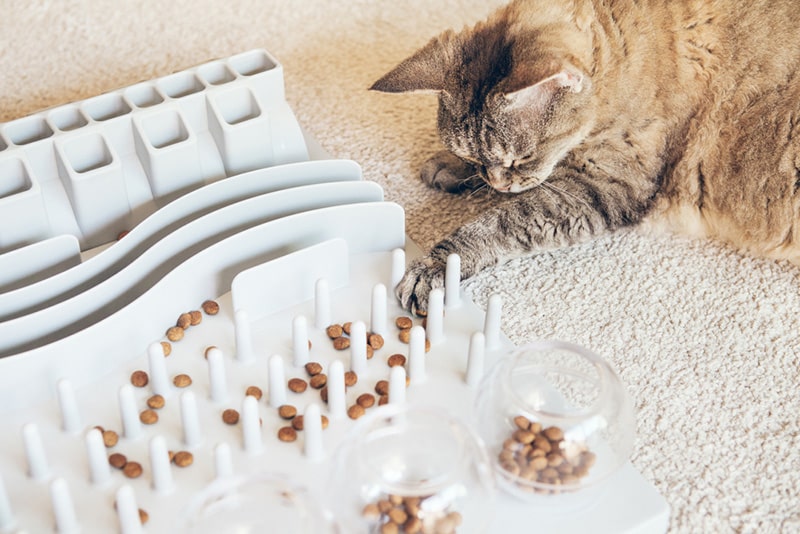Our cats love to engage in exciting activities that get their thinkers going. Anything that requires a prey drive response, they have it in the bag. Brain games can be so much fun for any cat—especially if they are pretty energetic.
These types of games will keep your cat’s attention focused on the task at hand. They will love staying busy, and you can rest easy knowing they are getting the right kind of stimulation. We have provided broad categories of different types of cat brain games, along with some examples of each that you can purchase.
Top 6 Cat Brain Games
1. Strategy Games
Strategy games are games in which your cat has to follow a series of steps in order to get a reward, usually a treat or some food. You can come up with your own strategy game for your cat, or you can check out one of the many options available for purchase.
The Trixie Brain Mover Activity Strategy Game Cat Toy

The Trixie Brain Mover Activity Strategy Game Cat Toy is a colorful, exciting way to get your furry friend’s attention. It includes different modules to challenge them at every turn.
There are four games in total. Game one involves pushing away the balls. Game 2 involves moving sliders. Or, game 3 involves moving the lever to open doors. The 4th and final game involves tugging open the door using a loop.
This piece is totally dishwasher-safe! So, if your cat gets it a little dingy, it will be no worse for the wear. We think it’s the perfect size and you can regularly keep it tidy.
Trixie Activity Fun Board 5-in-1 Activity Strategy Game Cat Toy

The Trixie Activity Fun Board 5-in-1 Activity Strategy Game Cat Toy is a well-made, non-slip game piece that will keep your cats occupied for quite a while! It certainly provides a lot of stimulation for your cat, since it has five different fun activities.
It includes fishbowl-style globes, pegs, a tongue and tunnel, and alley, all designed to get your cat’s attention. You can place treats or other cat-safe objects in between. You never have to worry about cleaning this toy. It is completely dishwasher safe, so whether you hand wash or toss it in the dishwasher, you don’t have to worry about it breaking down.
2. Puzzle Games
Puzzle games require your cat to figure out how to get a reward, again, usually a treat. They are similar to strategy games but they may or may not have a specific strategy involved. Puzzle games can have buttons your cat can press to open up compartments, for example, but don’t always require your cat to complete multiple steps in order to receive the reward.
Nina Ottosson by Outward Hound Buggin’ Out Puzzle & Play Cat Toy
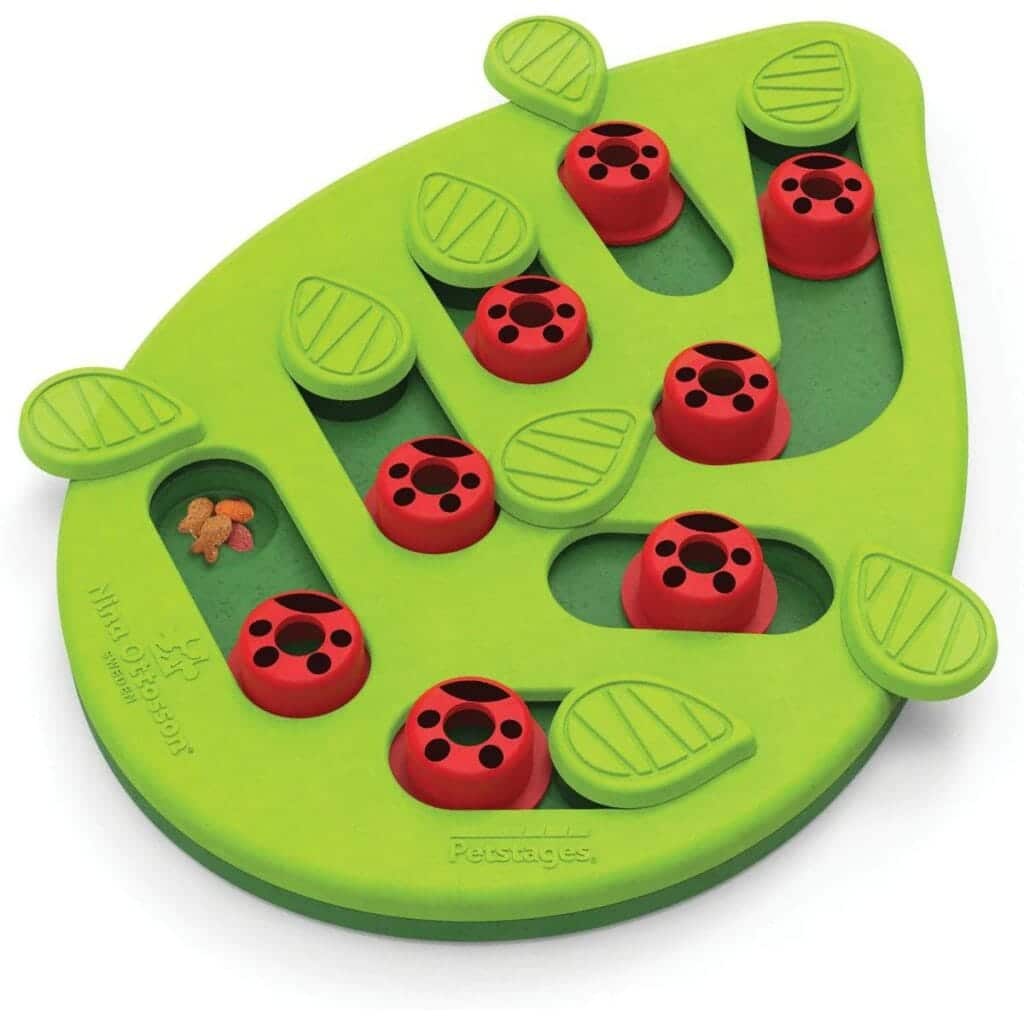
Nina Ottosson by Outward Hound Buggin’ Out Puzzle & Play Cat Toy is designed to encourage your cat to forage. You can hide some tasty treats in individual compartments. Your cat can really work for their snacks!
This is a good way to teach your cat that patience pays off. Your cat can explore all 14 hidden compartments in one sitting or over the course of the day. All the parts are kitty-safe, and there are no small pieces or fragments that could cut or pop off. This toy contains no BPA, PVC, or phthalates.
Nina Ottosson by Outward Hound Rainy Day Puzzle & Play Cat Toy
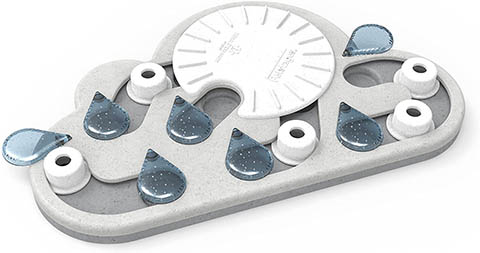
The Nina Ottosson by Outward Hound Rainy Day Puzzle & Play Cat Toy has all the compartments to keep your cats busy! This very interactive piece has lots of stimulating textures, nooks, and crannies. It will certainly bewilder your cat, but they’ll be determined to figure it out.
This design uses little raindrops to hide the treats as they battle the pegs to see if they can uncover any of them. This particular design is pretty easy for adult house cats, but kittens might need a slow introduction.
This particular piece is free of BPA, PVC, and phthalates. Plus, it contains no removable parts, so choking hazards shouldn’t be a concern.
3. Mazes
Mazes are similar to the other types of toys, but unlike puzzles and strategy games in which your cat can’t see the reward, usually your cat can see the treats or food in mazes, but they have to use their paws to navigate the treat through the maze in order to get it out.
Mazes are usually just made out of cardboard, so they’re easy for you to construct at home. However, if you would prefer to purchase one, here is a great option.
Cat Amazing Interactive Treat Maze & Puzzle Cat Toy
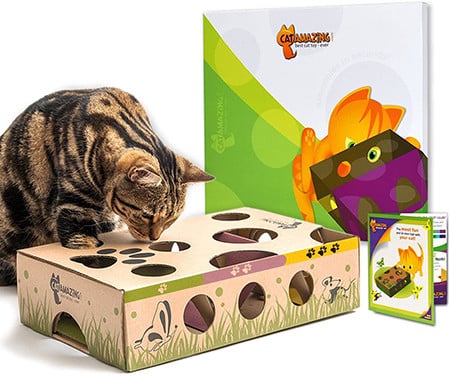
Cat Amazing Interactive Treat Maze & Puzzle Cat Toy it’s a really fun way to get your cat to interact. The puzzle style is designed to allow predatory instincts to flourish. This item is made from 30% recycled cardboard and the entire design is 100% recyclable on its own.
It is designed with metal-free ink, so it is not toxic to your feline friends. This is a clever way to keep your kitty busy. Although, it might not last so long with highly driven or aggressive cats. They might rip the cardboard quickly, causing degradation.
However, it is very straightforward to use and easy to assemble. Your cat can have a blast while it lasts!
4. Play Mats
Play mats are a great enrichment tool that can provide multiple forms of entertainment for your cat. You can hide treats, your cat can scratch at the mat, and you know they’ll even love to just sit and nap on it!
SnugglyCat Ripple Rug Cat Activity Play Mat
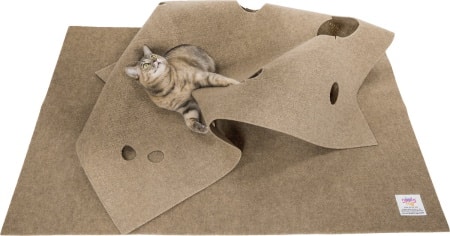
SnugglyCat Ripple Rug Cat Activity Play Mat is a really cool way to switch it up. If your cat loves ripping the heck out of your carpet, they’re really going to love this puzzle. It is designed to be a playmat, scratching post, socialization tool, and even a good place for naps.
You can stuff treats inside or hide little toys, and the holes can really get your cat going. We highly recommend putting battery-operated pieces in here that move so your cat is motivated to get them out.
This ripple rug is big enough for multiple cats, so it can be a very great addition to encourage play among friends as well. No matter the activity level of your cats, all of them can get some type of use out of this product.
5. Circuit Toys
You know what circuit toys are: balls or other toys that are stuck inside a track that your cat bats around to try to get them out. Circuit toys are great for keeping kittens entertained for hours, but even some older cats love them! Circuit toys can be simple or more elaborate, with multiple tiers or a longer track. Here’s a good option!
Catit Design Senses Circuit Cat Toy

The Catit Design Senses Circuit Cat Toy is designed for cats that absolutely love cat ball toys – you know the kind we mean! This is a single-track toy, but it’s much larger than other types of circuit toys, making it an amazing option for multi-cat homes.
The swirl pattern ball can really capture a cat’s attention, and the large openings allow your cat to touch the ball, encouraging them to keep playing. Your cat can get their entire gang of friends around to catch this pesky ball once and for all. It’s certainly a way to keep all your cat’s attention through multiple forms of sensory.
6. Electronic Toys
For kittens or especially active cats, electronic toys can usually provide lots of game options to give your cat some enrichment. Equipped with multiple types of play and flashing lights, these toys can combine noises, circuit toys, feather toys, laser lights, and more that your cat has to “catch.” It’s a great way for your cat to practice their hunting instincts. Check out one of our favorite options!
bitPeUG 4-in-1 Cat Toys
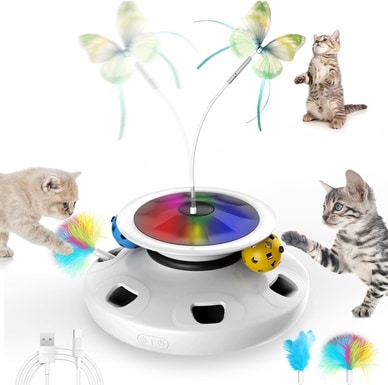
bitPeUG 4-in-1 Cat Toys is an electronic piece that will keep your cat engaged with bright lights, feather toy movement, and a moving ball around a track. It is very exciting, especially for younger and energetic cats!
There is an RGB light at the top that will flash and attract your cat when it knows they’re near. It has a standby mode and snoozes after about 10 minutes. When fully charged, the product lasts a whopping seven days!
Plus, you can get interchangeable pieces for the product to keep it fresh and relevant.
Why Are Brain Games Important?
Offering your cat several different forms of entertainment is a way to make sure they’re occupied at all times. Cats need an enriching life indoors to make up for what they’re lacking in nature.
Cats love exploring, chasing, stalking, pouncing, sharpening their claws, and exercising their brains. If they do not have enough stimulation in the house, it can lead to unwanted tendencies, such as hyperactivity or destructive behaviors. Here are some upsides to buying brain games for cats.
Encourages Mental Engagement
Whether you are luring your cat in with catnip or their favorite treats, these types of puzzles will engage your cat’s mind. They are designed to stimulate the senses to get them to work for what they want.
Most of these puzzles contain individual compartments that your cat has to figure out how to navigate. It can be a little bit difficult for your cat, but that will only amplify their determination. Plus, sitting and watching them try to figure things out will be fun.
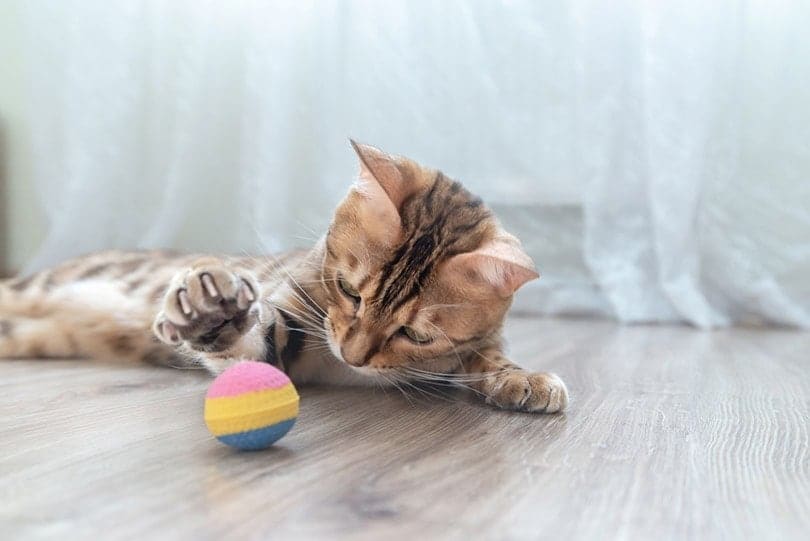
Channels Prey Drive Instincts
It’s no secret that even the tubbiest of all chunky cats loves to play from time to time. Prey drive is instinctual and natural in your cat’s life. So, stimulating this response is a good way to channel energy appropriately.
Once your cat locates yummy food inside, they will make it their life’s mission to have a piece. It’s captivating for cats of all activity levels, but keep in mind certain cats might use it more than others—depending on their voracious appetite and activity level.
Slows Down Fast Eaters
Some cats will suck down their food faster than a vacuum cleaner. Often, this can lead to the stomach getting overloaded and they can regurgitate their food.
If this has been an ongoing problem in your household, look for ways around it. After all, nobody wants to clean up a loaf of cat yack right after mealtime. Puzzle toys make your cat have to work for their food or treats, so they don’t eat them as quickly.
Are Cardboard Puzzles Worth It?
Cardboard puzzles are definitely worth it. The fact is, once your cat has the method down, they will likely be able to navigate the puzzle very quickly, speeding up the eating process.
So, if you are frequently getting new puzzles to try out, it will never get old. You can watch them use their skills to figure out all sorts of different designs.
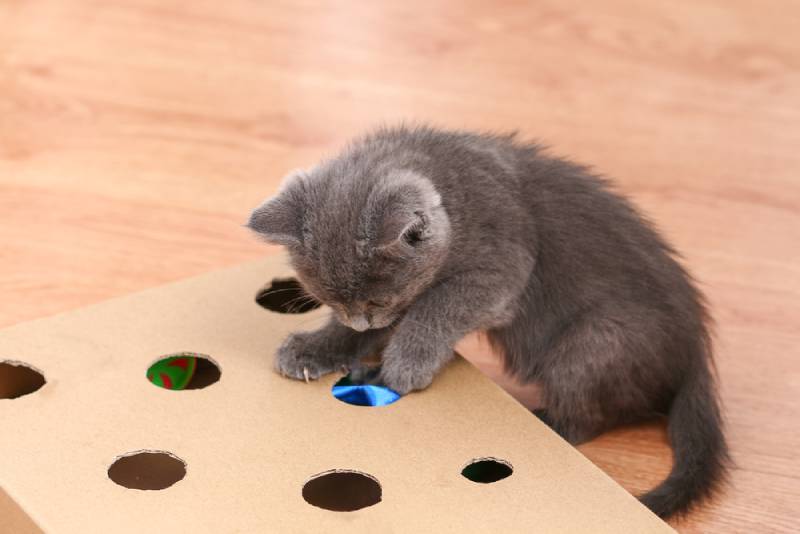
Conclusion
Brain games are an incredibly important part of your cat’s life. It is crucial to ensure that our cats receive the right kind of enrichment activities in their daily lives. You can find lots of options online or even make your own at home!
There is no shortage of cat toys available on the market, that’s for sure. So, get one or two or three—they will all come in handy!
Featured Image Credit: Veera, Shutterstock

